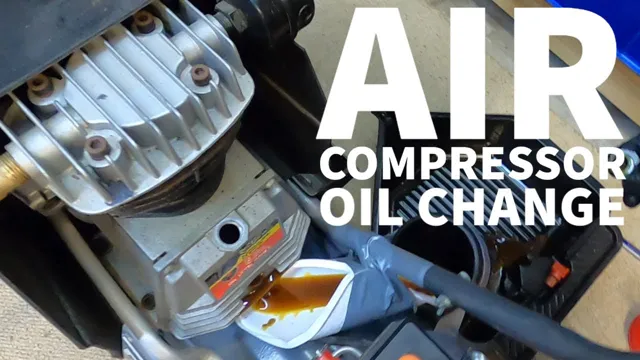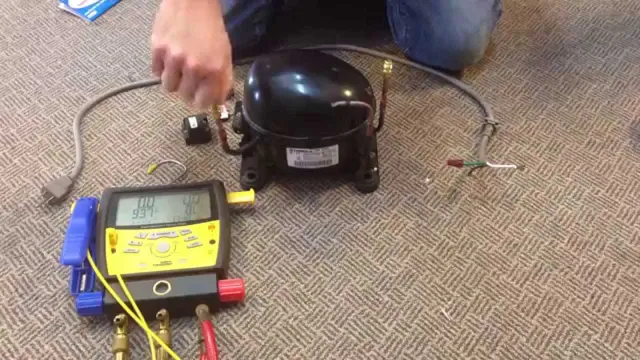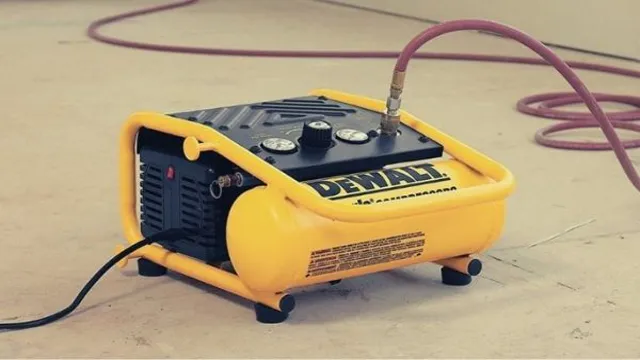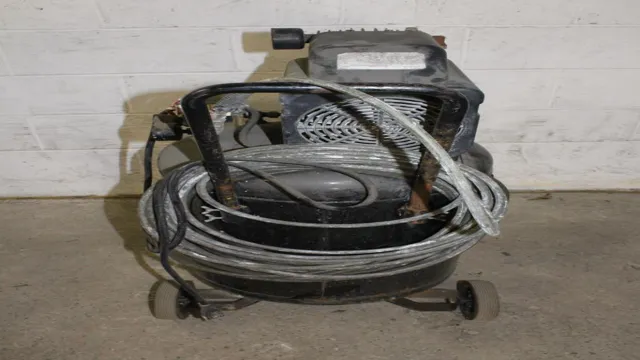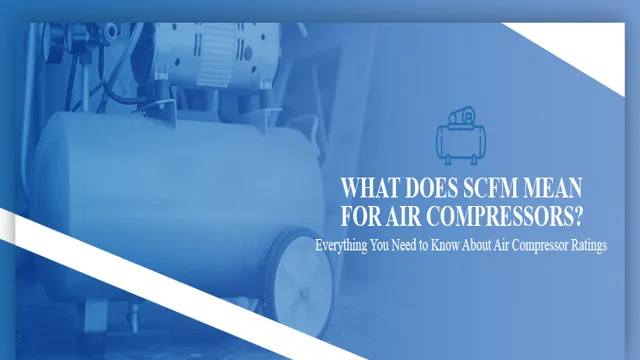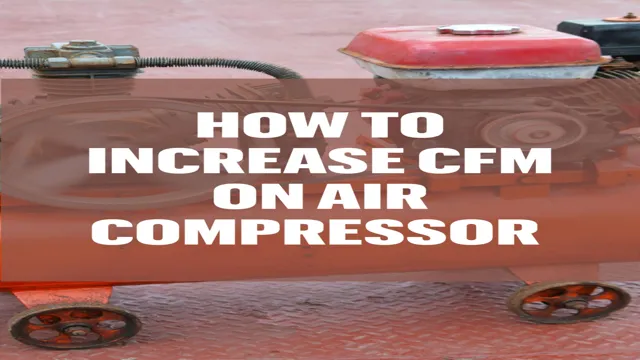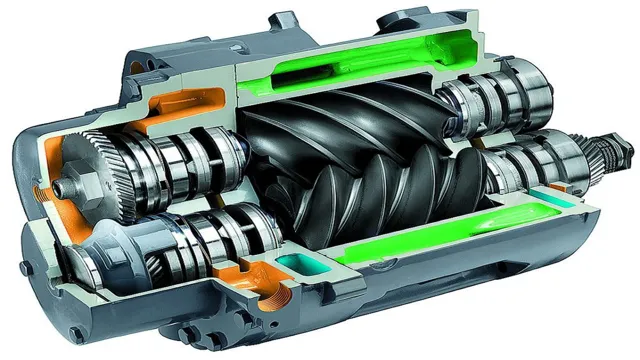How to Measure Bumping Clearance in Air Compressor for Efficient Performance

If you have an air compressor, it is vital to ensure that it’s working efficiently and smoothly. One of the key factors that determine its performance is the bumping clearance. But wait, what exactly is bumping clearance? It’s the distance between the cylinder and the piston when it’s at its highest point.
Measuring this distance is crucial to prevent any damage to the cylinder and ensure longevity of the compressor. In this blog, we’ll guide you through the process of measuring bumping clearance in your air compressor. We’ll cover the equipment you need, the necessary steps, and some useful tips that’ll make the process easier.
After reading this guide, you’ll have a better understanding of how to maintain and optimize your air compressor’s performance. But why is bumping clearance important? Imagine driving a car with worn-out brakes and not paying attention to the brake pad’s thickness. Soon, the brake rotors will wear out, eventually leading to a dangerous situation.
Similarly, if you don’t measure the bumping clearance in your air compressor, premature wear and tear can occur, leading to damaged cylinders and pistons. So, whether you’re a DIY enthusiast or a professional mechanic, measuring the bumping clearance is one of the essential maintenance tasks. Let’s dive in and learn how to measure bumping clearance in your air compressor.
What is Bumping Clearance?
When it comes to air compressors, bumping clearance is a critical aspect that should not be overlooked. So, what exactly is bumping clearance? Essentially, it refers to the distance between the piston of the air compressor and the cylinder head when the piston is at its top dead centre position. This measurement is crucial, as it affects the efficiency and performance of the compressor.
To measure the bumping clearance, you will need to turn off the air compressor, remove the cylinder head, and use a feeler gauge to measure the distance between the top of the piston and the cylinder head. The proper bumping clearance measurement varies depending on the type of compressor you have, its size, and the manufacturer’s specifications. So, it’s important to consult your user manual before making any adjustments or replacements.
By properly measuring and adjusting your compressor’s bumping clearance, you can ensure optimal performance and prevent any unnecessary wear and damage.
Definition and Importance
Bumping clearance refers to the space between two or more objects, typically between a moving object and an object that is stationary. This space is essential for ensuring safety and preventing collisions. For example, in the case of vehicles, bumping clearance is the space between two vehicles that allows them to move safely without bumping into each other.
Proper bumping clearance is crucial in preventing accidents, especially in high-traffic areas like highways and airports. Without it, there would be a higher risk of collisions, damages, and injuries. Therefore, maintaining a safe distance between moving objects is critical, and bumping clearance plays a vital role in achieving this goal.

Measuring Bumping Clearance
If you’re wondering how to measure bumping clearance in your air compressor, it’s important to understand what bumping clearance is first. This refers to the distance between the piston and the cylinder head when the piston is at top dead center. Measuring bumping clearance can help ensure that your compressor is running efficiently and effectively.
To measure bumping clearance, you’ll need to remove the cylinder head and piston from the compressor. Then, using a feeler gauge, measure the distance between the piston and the cylinder head at top dead center. Make sure to consult your air compressor manual for specific instructions on how to measure bumping clearance for your particular model.
Ideally, you want the clearance to be within a specified range as listed in your manual. If not, it may be time to replace parts or adjust the piston ring. By regularly measuring bumping clearance, you can keep your air compressor running smoothly and avoid potential damage or breakdowns.
Step-by-Step Process
Measuring the bumping clearance is an essential step in assessing the health of your engine. This process is what lets you know whether the engine is functioning correctly or if there are problems in the piston or combustion chamber. The first step is to remove the cylinder head and lay a straight edge on top of the block.
You then use a feeler gauge to measure the clearance gap between the piston and the straight edge. If there is too much clearance, it could result in engine failure or damage, as well as many other issues. Proper measurement is crucial to ensure your engine is performing at its best.
Therefore if you notice any irregularities, have your engine immediately inspected by a professional.
Tools Required
When it comes to measuring bumping clearance, there are a few tools you’ll need to have on hand. The first is a set of feeler gauges, which are thin, flat pieces of metal of various thicknesses that you use to measure the space between two objects. You’ll also need a straight edge, such as a precision ruler or machinist’s straight edge, to help you keep your measurements accurate.
In addition, a depth gauge can come in handy to measure the depth of a bore or hole. It’s important to have the right tools to make sure you’re getting an accurate measurement of the bumping clearance, which is the space between the piston and the cylinder head at the top of the engine. By using these tools together, you can get a clear picture of the engine’s condition and make any necessary repairs or adjustments.
Interpreting Results
When it comes to measuring bumping clearance in air compressors, it’s important to have the right tools and techniques on hand. First and foremost, it’s crucial to verify that the compressor is turned off and disconnected from any power sources before attempting any measurements. Then, using a micrometer or dial indicator, carefully measure the distance between the piston crown and the cylinder head at both the top and bottom of the piston’s travel.
This will give you an accurate reading of the bumping clearance. After obtaining this measurement, it’s important to interpret the results carefully. If the bumping clearance is too small, there is a risk of damage to the compressor due to contact between the piston and cylinder head.
On the other hand, if the bumping clearance is too large, the compressor may not be operating efficiently, leading to decreased performance and increased wear and tear over time. By properly measuring and interpreting bumping clearance, you can keep your air compressor running smoothly and reliably for years to come.
What the Numbers Mean
When it comes to interpreting results, it’s essential to understand what the numbers mean and how they relate to your goals. It’s not just about looking at the raw data, but rather understanding the context in which it was gathered and the story it tells. For example, if you’re analyzing website traffic, it’s essential to know what your bounce rate is, how long your visitors stay on your site, and which pages are the most popular.
These metrics can help you optimize your website and improve your user experience. When evaluating any data, it’s incredibly important to keep your overarching business goals in mind and to think critically about what the numbers mean for your current situation. Remember, data is a tool to help you make informed decisions, but it’s up to you to interpret it accurately and make actionable changes based on your analyses.
Maintaining and Adjusting Bumping Clearance
If you want to keep your air compressor working smoothly, you’ll need to understand how to measure bumping clearance. This refers to the space between the piston and the cylinder head; if this space is too small, the piston will hit the head and cause significant damage. To measure bumping clearance, you’ll first need to remove the cylinder head.
Take a feeler gauge and slide it between the piston and the head to determine the gap. Ideally, the clearance should be between .020 and .
030 inches. If the clearance is too small, you’ll need to adjust the cylinder head or piston to create more space. Regularly checking and adjusting bumping clearance will help prolong the lifespan of your air compressor and prevent costly repairs down the road.
When to Check and Adjust
Maintaining and adjusting bumping clearance is an important aspect of keeping your machinery functioning efficiently. It’s recommended to check and adjust bumping clearance at least every six months or after around 1,000 hours of operation. Neglecting to do so can result in reduced performance, increased wear and tear, and even equipment failure.
It’s crucial to pay attention to any signs of wear or damage on the machinery, as this can impact the bumping clearance. To adjust the bumping clearance, first, measure the distance between the cylinder head and the piston. Next, loosen or tighten the cylinder head to achieve the recommended clearance.
It’s essential to follow the manufacturer’s instructions and use the right tools for the job. By keeping a regular maintenance schedule and adjusting bumping clearance as needed, you can extend the lifespan of your machinery and improve its overall performance.
Tips for Maintenance and Adjustment
Maintaining and adjusting bumping clearance is an important maintenance task for any car owner. Bumping clearance refers to the distance between the vehicle’s body and suspension components. Over time, this clearance can become worn or damaged, affecting the car’s handling and stability.
To maintain proper bumping clearance, it’s important to regularly inspect your car’s suspension components and look for any signs of damage or wear. If you notice any issues, such as a wobbling or shaking sensation, it’s important to have your vehicle serviced by a qualified mechanic. Additionally, keeping your tires properly inflated and rotating them regularly can help prevent premature wear on your suspension and improve your car’s overall performance.
By taking these simple steps, you can help ensure that your vehicle remains reliable and safe to drive for years to come.
Conclusion
So there you have it, measuring bumping clearance in an air compressor is all about finding that sweet spot where your bumping element can do its job without causing any unnecessary harm or noise. With the right tools and a bit of patience, you can determine exactly how much clearance you need and enjoy a smoother, quieter compressor with every use. Just remember, it’s all about balance, precision, and a sense of humor – because as we all know, a little bumping never hurt anyone!”
FAQs
What is bumping clearance in an air compressor?
Bumping clearance is the distance between the piston and the cylinder head when the piston is at top dead center.
Why is it important to measure bumping clearance in an air compressor?
Proper bumping clearance ensures that the piston doesn’t collide with the cylinder head during operation, reducing wear and tear on the components.
What are some common methods for measuring bumping clearance in an air compressor?
Common methods include using feeler gauges, dial indicators, or a depth micrometer.
How often should bumping clearance be checked in an air compressor?
It should be checked periodically during routine maintenance, and any time the compressor is experiencing unusual noise or vibration.
What is the acceptable range of bumping clearance in an air compressor?
The acceptable range varies depending on the make and model of the compressor, but typically falls between 0.002″ and 0.008″.
How can improper bumping clearance affect the performance of an air compressor?
Improper bumping clearance can cause reduced efficiency, increased noise and vibration, and premature wear on the piston and cylinder head.
What should be done if the bumping clearance is outside of the acceptable range?
Adjusting the cylinder head or piston may be necessary to bring the bumping clearance within the acceptable range. This should be done by a qualified technician.

